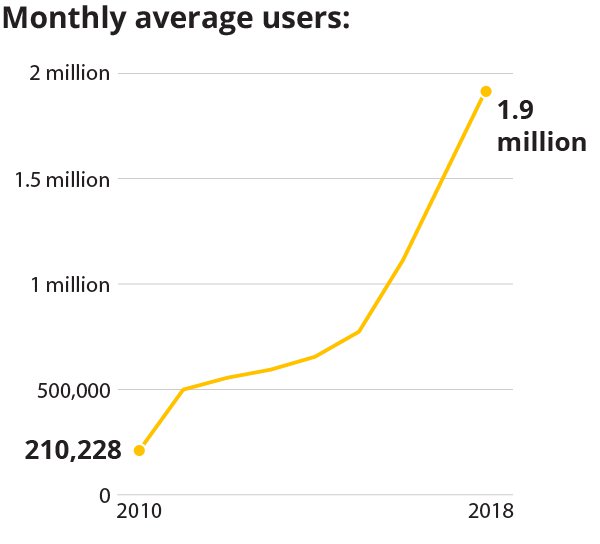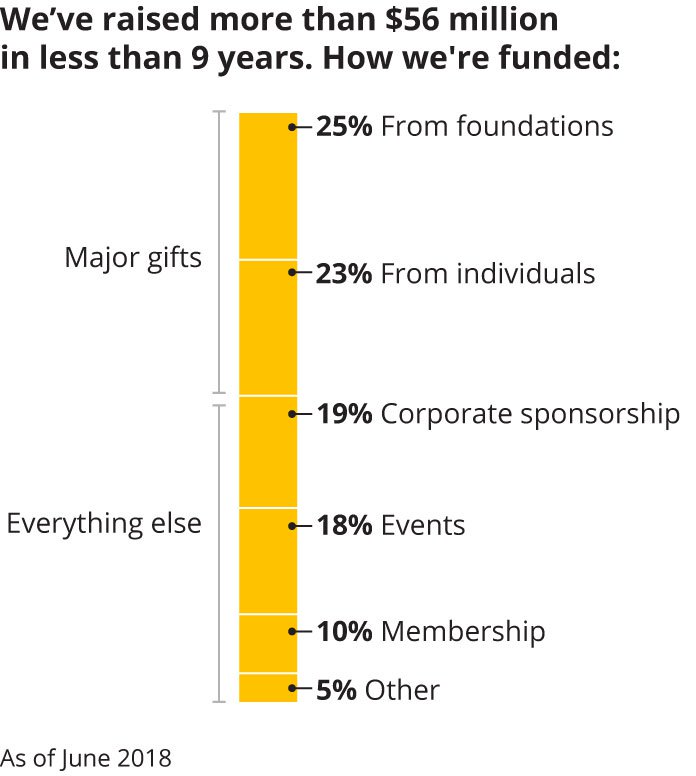
If you like newsroom innovation documents, you’ll love this: The Texas Tribune on Wednesday released its first-ever strategic plan, outlining where it wants to be by 2025.
The nine-year-old nonprofit’s entire staff has been working on the document for nearly a year. (You can compare and contrast with the piece we ran in 2014 looking back at the strategic shifts of the Tribune’s first five years.) Here are some of the highlights and goals of the 3,000-plus-word report.Each day we confront a new normal: public distrust and official condemnation, an expanded competitive set that blurs the line between real and fake news, a fast-changing tech landscape, and business model challenges that imperil even the best of the best https://t.co/NXFdeiz4iD pic.twitter.com/zyRpEMd0FY
— Evan Smith (@evanasmith) September 5, 2018
The Texas Tribune now has 1.9 million website visitors a month, nearly eight times as many as it had in 2010 (“and thousands of others consume our journalism in their local newspapers, on their local newscasts, through social media, and at the Tribune’s statewide events”), but that growth hasn’t been “rooted in a deliberate study of who our audience is and how it interacts with our content.” Over the next seven years, the Tribune will launch a breaking-news desk and develop strategies that aim to attract “Texas’ fastest-growing populations: young and ethnically diverse Texans,” as well as “urban and suburban” folks outside Austin.

Among the ways the Tribune will do this: more cross-publishing (including a “weekly legislative update in the print-focused Community Impact,” as well as projects inspired by the success of the Tribune’s 2017 sex-trafficking reporting partnership with Cosmopolitan), more Spanish-speaking hires, and a focus on “email acquisition and retention” rather than fickle platforms (ahem, Facebook).
3/ By 2025, we hope to double our audience — by deliberately pursuing readers among the fastest-growing populations in Texas. That means taking a more ground-up, community-driven approach to our journalism. https://t.co/71YRg3H2rZ pic.twitter.com/JqHjkHlHAb
— Texas Tribune (@TexasTribune) September 5, 2018
In 2009, 2,081 people subscribed to the Tribune; now, 4,399 people do. Membership growth “hasn’t kept pace with our overall audience growth,” so the plan is to double down on it, offering members more opportunities to engage and get involved across the newsroom, and boosting newsletter readership (“newsletters are a direct pipeline to engagement and member conversion”).
From our founding, the Tribune’s diverse revenue model — drawing on foundations and corporations as well as individuals to fund our operations — has been one of our biggest strengths. But ultimately, our sustainability as a news organization will depend heavily on the last of that group: fellow Texans who believe enough in our mission to invest in it.
One tech goal (among several) is to “be more than a de facto Capitol bureau for the state’s TV stations. We’ll independently produce new video and audio products that drive engagement on our site and across social platforms and create new revenue opportunities.”
Since launch, about 10 percent of the Tribune’s revenue has come from individual memberships; a quarter has come from foundations. The Tribune wants to increase its revenue by 10 percent each year, and “given the capacity of high-net-worth individuals, deep-pocketed foundations and corporate behemoths in our midst, we believe it’s highly attainable.” One pathway there: “gala fundraisers around the state…mission-focused, talent-driven evening events in Dallas, Houston, and San Antonio.”

Other targets the plan sets:
The full report is here. (And, full disclosure, Nieman Lab director Joshua Benton was one of the people the Tribune consulted in the creation of this report.)